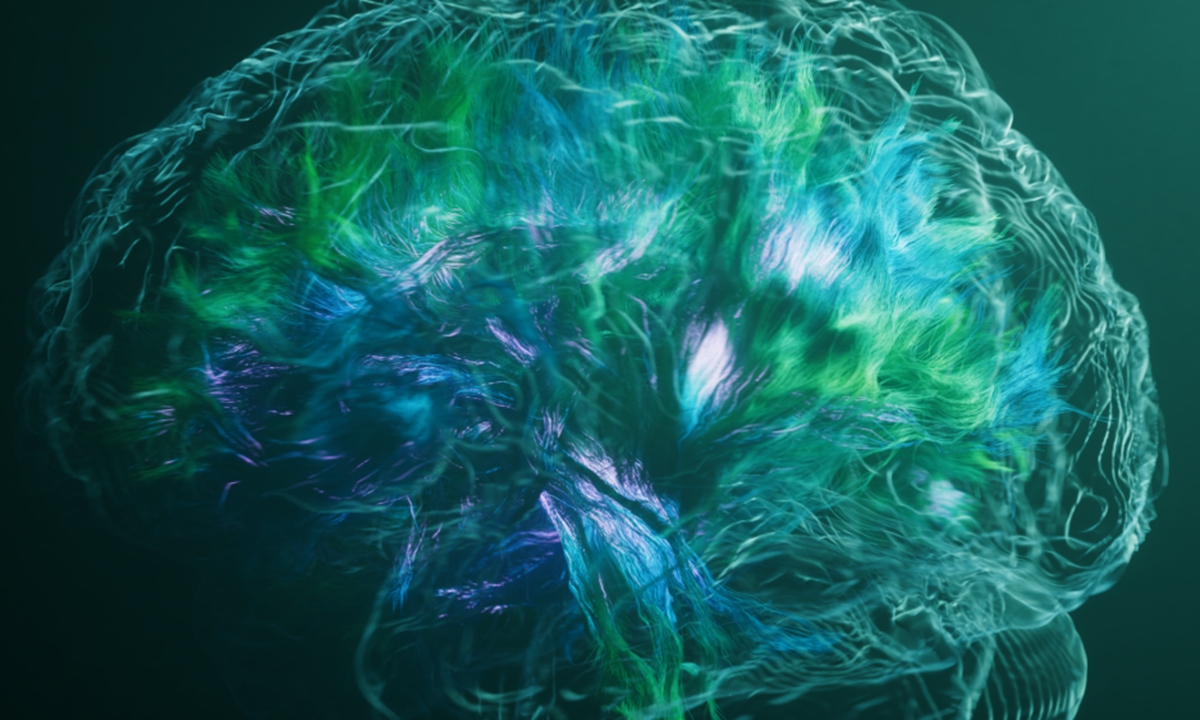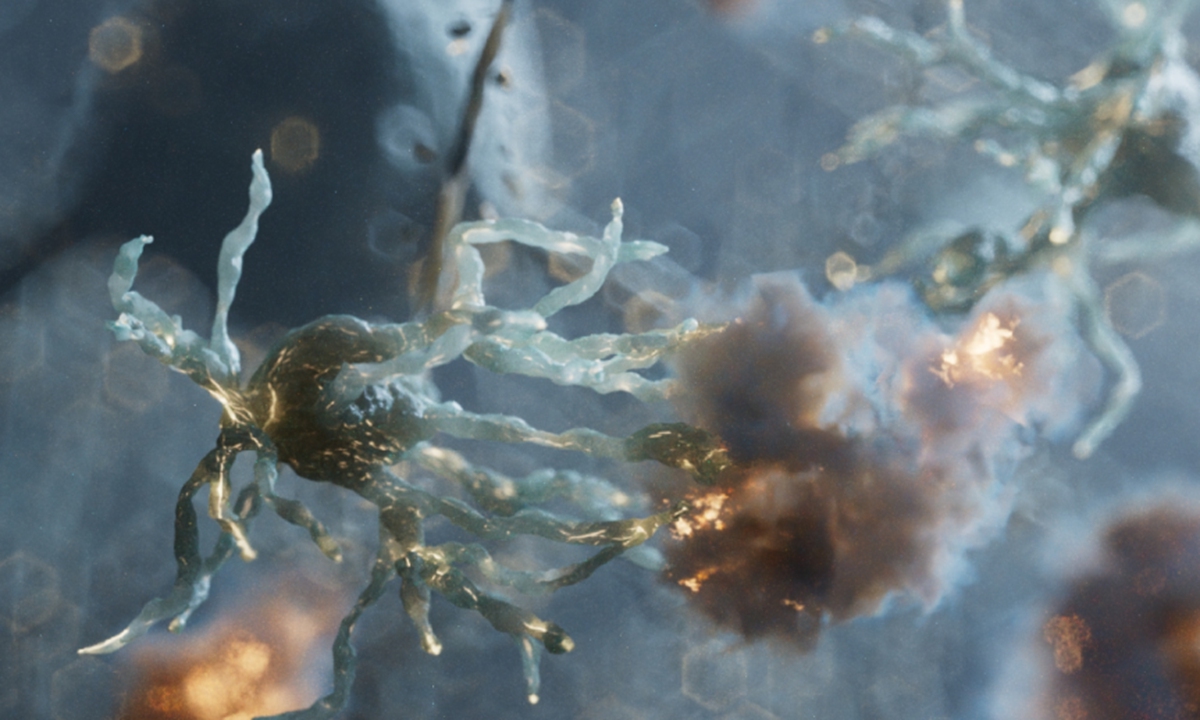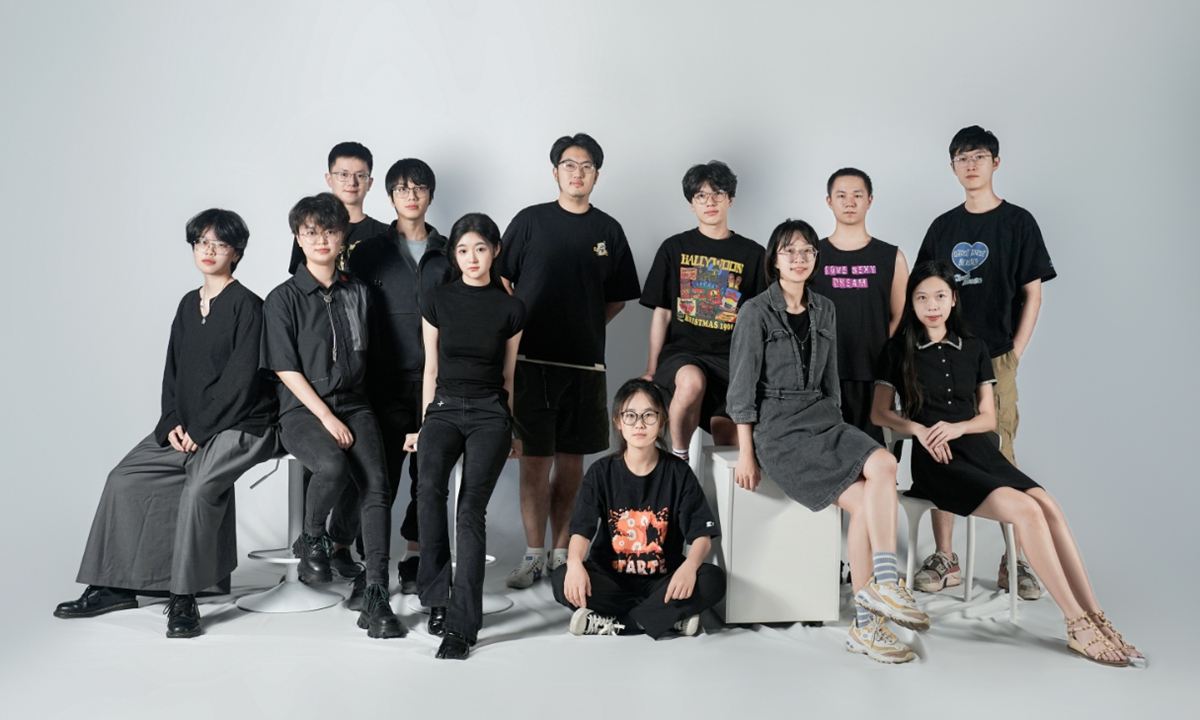
An image of the human brain created by the imMed team Photo: Courtesy of imMed
Although it's still a young field, even internationally, medical visualization - a combination of 3D imaging, medical knowledge and art - is being expanded upon by a group of passionate Chinese medical artists who are set to reform medical science in China.
Graduating from a medical school in East China's Zhejiang Province, Zhou Shuyang set up a start-up company specializing in the field with his business partner Ma Nan.
Over the past five years, their team has been working on presenting realistic but beautiful cartoon drawings of human organs and tissues through 3D and other scientific technology.
"To make our work stand out from other medicine-related jobs, we can say that what we do now is to combine science and art to allow people from non-medical backgrounds to understand what's happening inside their body, and to raise awareness about their own health. This is main purpose of medical visualization," Zhou told the Global Times.
Medical visualization is used in multiple situations, such as in teaching materials for both experienced doctors and medical students, or presenting fun scientific knowledge that the general public can easily understand.
Through their efforts, the human body is no longer 2D slices seen on CT scanners, but something much more lifelike.
The imMed team recently made a name for themselves by entering Sina Weibo's trending list with a video of a life-like 3D beating heart.
In the video, four white to almost transparent valves flap open and close with every heartbeat. Created by the team with the use of computer learning and 3D technology, this animated heart never tires.

An image of human tissue created by the imMed team Photo: Courtesy of imMed
Rigorous artIt's very lifelike, too lifelike in the opinion of some people who say it feels like looking at a real beating heart that is right in front of their eyes.
"We went through nearly all the materials on the human heart that we could found on the internet to get this heart pounding," Yan Wenfei, the team's CGI medical general counsel, told the Global Times as she showed slides that revealed the step-by-step process of making the "living" heart.
First they designed the basic structure of a human heart, and then added various folds and layers to show the different parts of the heart.
It took them more than three months before the final results were presented on social media.
"Most people's common impression of a beating heart comes from text descriptions, either scientific or artistic ones, but it is still shocking to see such a video that is a few seconds long," a Tianmu News host comments in a report about the video.
It is shocking indeed, and this description can be applied to the team's other works as well.
For example, to recreate the process of inhaling vaccine medicine in animated form, the team decided that the images of the inside of human lungs should be presented by comparing it to an underwater world.
"It is commonly known in the medical world that medicine can find a new balance between science and art," said Zhou.
"You see tufts of fluff floating on the mucous membrane of the lungs in a CT image, and what we do is to transform that fluff artistically into waving coral reefs under the sea," he further explained.
"And then we add a final touch of color to make it look like a real undersea world."
Medical visualization has developed over the past 100 years, as seen by the achievements of organizations such as the Association of Medical Illustrators in the US, but still, the young CEO noted that it remains an underdeveloped field, especially in China.
Zhou's relationship with medical visualization started when he was a medical student in Zhejiang helping draw illustrations for his schoolmates' medical papers.
Later, during his seven years as a doctor, he drew medical illustrations for various medical textbooks and core journals, before finally resigning as a doctor to continue his medical painting passion.

Some members of the imMed team Photo: Courtesy of imMed
Growing teamIn 2018, he started his own training course to teach both doctors and painters. It wasn't long before he met Ma.
"We both agreed at the time that although domestic medical visualization was still very basic, it was a huge potential market that one day could equal companies overseas that started over 120 years ago," Zhou explained.
And their efforts have paid off, as many well-known scientists have chosen the team to draw illustrations for them.
"Among roughly 200 scientists who published their papers in global magazines or journals such as Nature every year, many of their illustrations were composed by our team," Ma said.
Zhou said that their next goal is to transform their works into creative products and help establish a new subject of study at universities.
Kuang Zheng, the team's 3D visual effects director, and Wu Fulin, a digital sculpting director, also contributed to this story.